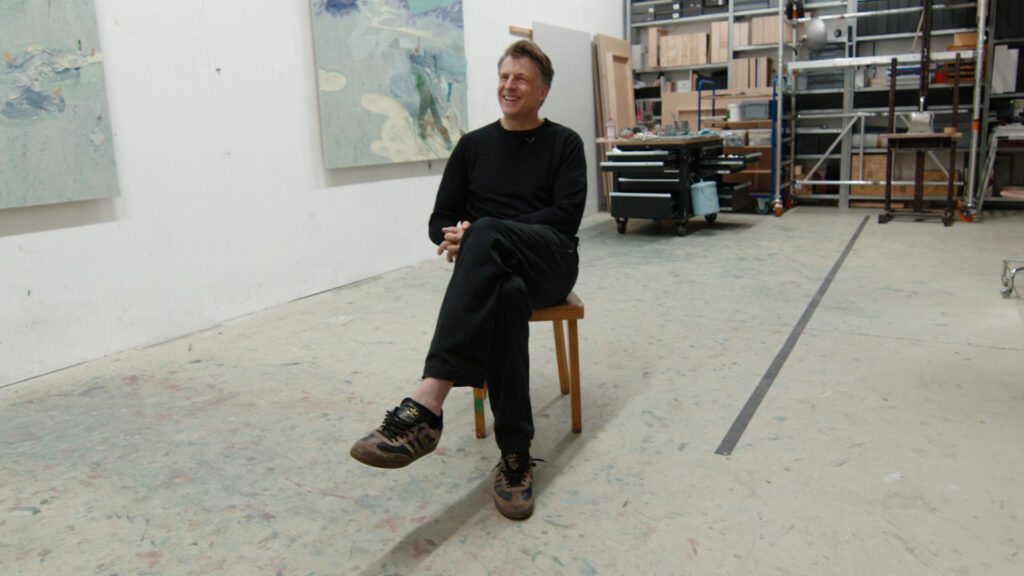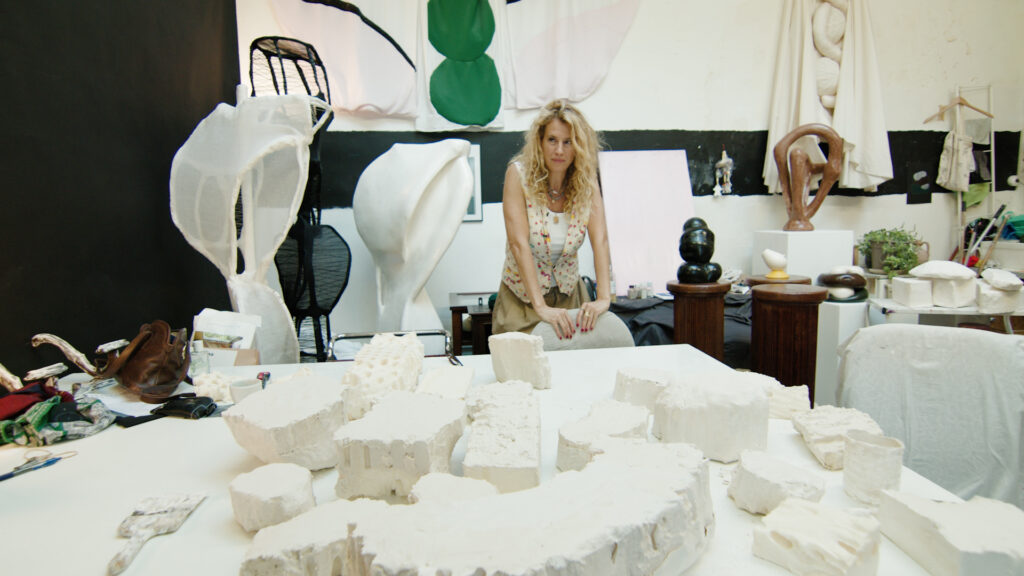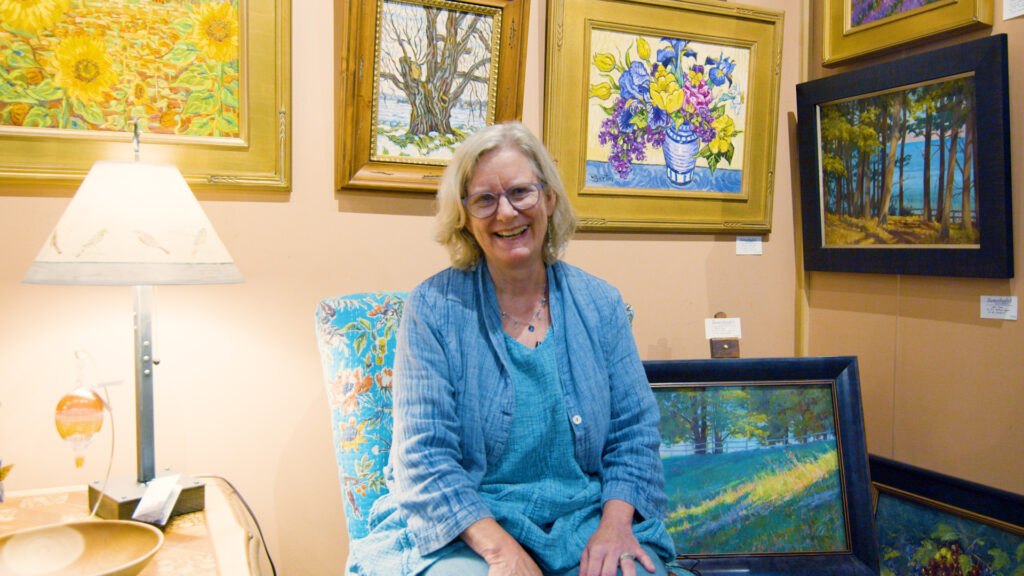Dean Millien sits with an energy that feels both grounded and electric. His hands move across foil and scrap metal the way a painter might move a brush, pulling life out of materials most people overlook. Entering into his space was a welcoming force of passion. Aluminum , tin, and copper line the walls and build a mound in the center of the room.
His practice started when he was young, and it came from loss. He remembers having toys, and losing them when his father threw them away. “I had to start over again,” Millien says. “And I used foil. I didn’t know I was able to use foil at the time, but I had an imagination that was strong and it allowed me to explore that possibility. So the rest became history.” What could have been the end of play became the beginning of a lifelong practice of making.
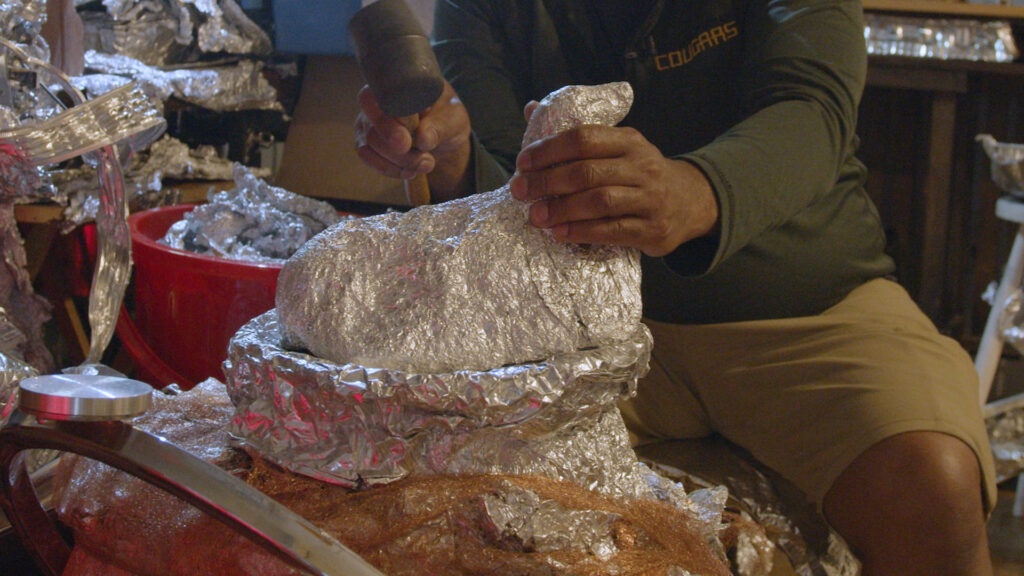
He admits that creating is not just a choice, but a necessity, a form of survival. “Why do I feel like I’m still expressing myself to this day?” he repeats, as if weighing the question. “Because it’s important. That’s something that can’t be a fluke. Especially when you’re that young, you have to. It’s an ability.” Dean is open about how much this ability mattered in his life. He grew up with a learning disability that made school hard. “It slowed me down in life. It put me in a box,” he says. “But my artwork took me out of that box. It saved me.”
For Dean, art has always been a way of reaching out, of connecting. He describes how his sculptures and creations allowed him to speak to people of all walks of life, bridging gaps that school and traditional education could not. He didn’t grow up with access to structured learning. “My education wasn’t the best,” he admits. “There’s a lot of things I didn’t learn that I should have at that time. But what I did learn was crime, stealing cars, things like that. And I’m glad my art got me out of it, because I focused so much and believed in it so much. It got me out by itself.”
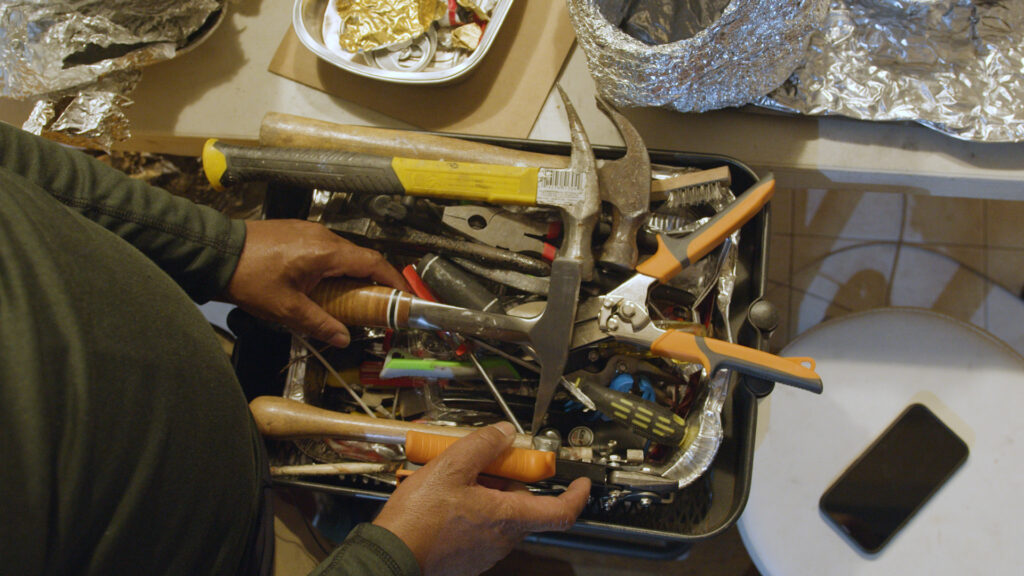
His creative process is rooted in adaptability, in finding tools and surfaces anywhere he can. He describes pencils and pens as early instruments, hammers later, and eventually, as his practice matured, custom-built anvils and carts designed to hold everything he needs. The materials Dean works with are not fancy or expensive. They are everyday items, often discarded, that he turns into objects with presence. His inspiration comes from what’s around him. “It’s the world around me, to be honest with you. Whatever I find interesting, I gravitate to it and it becomes a part of my art.”
Dean’s art doesn’t exist in isolation. It comes from the streets, from his neighborhood, from what he sees every day. Basketball games, discarded objects, the shine of something overlooked on the ground—all of it filters into his imagination. Toys, though, remain the core. “Toys were the reason for me doing this. I love toys even till this day. Funky toys, cheap toys, really structural detail toys. It just awakens me from the dead.”
Dean acknowledges that the art world itself has its own bureaucracy and structure, one that can feel like another set of chains. “The bureaucratic part of the art world, kind of, you know, it’s like a chain. But it doesn’t hold me back. I break those chains because of my will. Where there’s a will, there’s a way.” His philosophy is one of persistence, of always finding a path forward despite systems that might seek to slow him down.
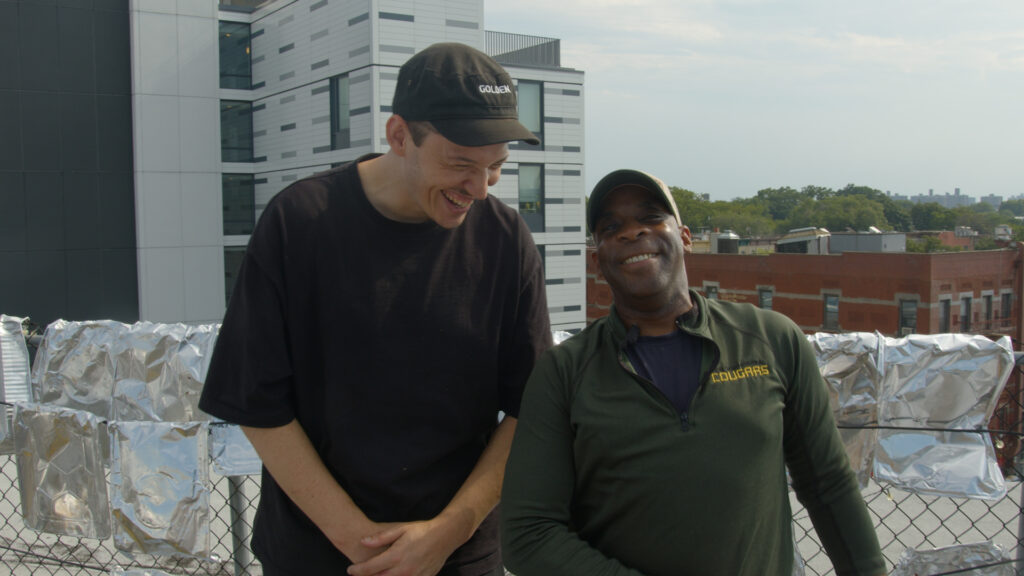
His friend and collaborator, painter James Fischer Smith, recalls meeting Dean in 2018 at Con Artist Collective in New York. James describes being immediately struck not only by Dean’s art but also by his singular belief system and resilience. Over the years, their friendship grew through working together on projects through years of experiences made together, supported each other during hard times, and built a partnership rooted in respect. James reflects on Dean’s ability to turn discarded materials into beauty: “He’s opening up a new dimension of art to me—molding the disposable into the sublime.”
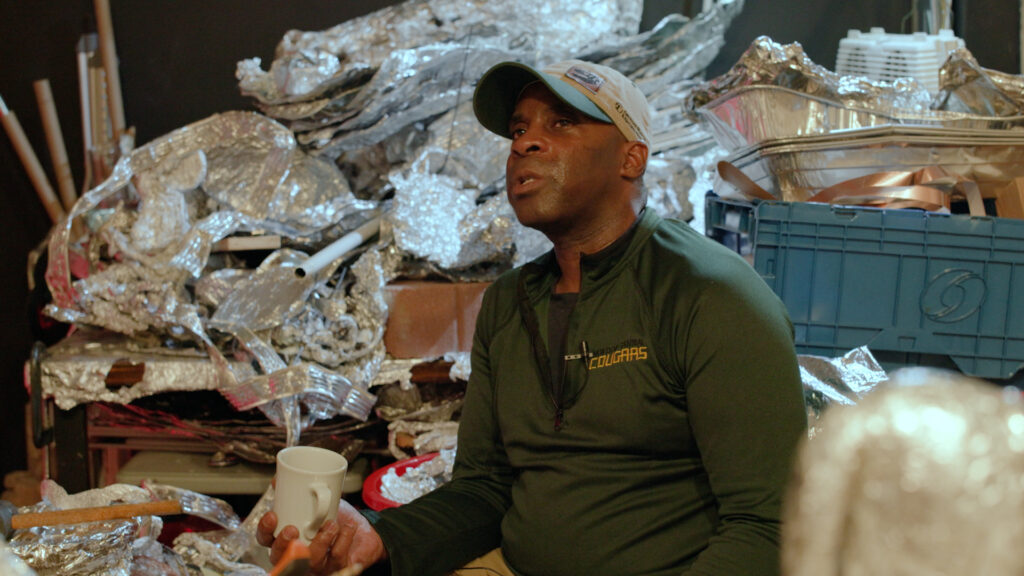
That transformation—the shift of foil, pans, or copper into something alive—is central to Dean’s practice. He doesn’t just sculpt objects; he sculpts possibility itself. “There’s no limit to what this can do,” he insists. “I want to be a part of showing people that it can become so many things. Right now, when you look at it, you see the foil, the creations. But then you’ll see it’s different. It has color, it has movement, everything. There’s so many possibilities.”
Dean talks about permanence, about wanting his work to find its roots and stability in the art world, to reach generations beyond his own. His goal isn’t only to make but to build a foundation where others can learn and contribute. “It helped me reach out to people,” he says, “and created a pathway so I can teach and help other people myself as well.” The act of creating, then, becomes something communal, something larger than one person.
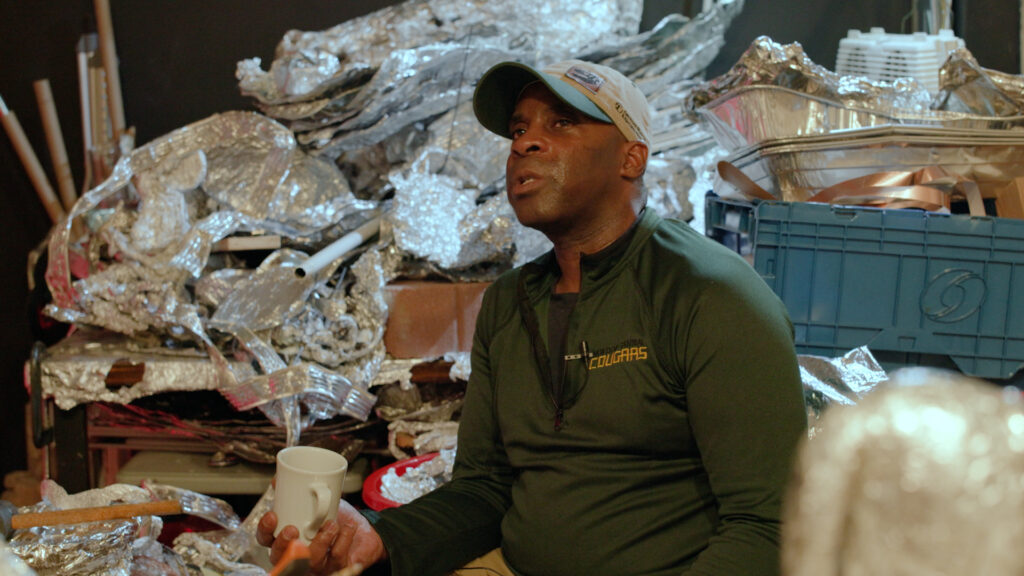
Dean’s art is both personal and universal. It is an expression of resilience, imagination, and faith. His sculptures of foil and metal aren’t just objects; they’re testaments to transformation, to turning adversity into creation. “I always believed what I’ve done and what I’m doing was the best idea because it always felt right,” he says. “And when I went into the art world, I learned so much cool stuff. I loved it. I felt like I fit in.”
In the end, Dean’s story is about more than aluminum foil or metal. It’s about the unbreakable will of a creator who refuses to be confined by circumstance, who sees possibility where others see waste, who builds entire worlds out of what’s been discarded. His art shines with the same glint as the foil he bends and shapes. Ordinary at first glance, extraordinary upon reflection.
Sebastien Jupille
Sébastien Jupille’s story begins simply. As a kid he drew constantly, not because anyone pushed…
Eva Dixon
From the beginning, Eva Dixon’s relationship to making things was tied to the rhythms of…
Marc Sparfel
Marc Sparfel’s story begins with an act of discovery, the kind that happens quietly, without…
Ruprecht von Kaufmann
In his Berlin studio, Ruprecht von Kaufmann works surrounded by the quiet textures of linoleum,…
Amélie Caussade
Amélie’s journey as an artist began unexpectedly, born from a moment of sudden disruption. In…
Julie Stoppel
Julie Stoppel never planned to become an art teacher, or a gallery owner for that…




